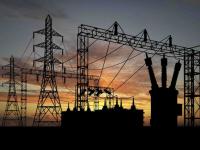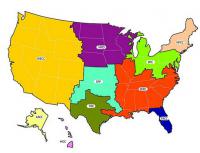-
Strengthening U.S. infrastructure to withstand disasters
The delivery of essential services — whether in food, water, health, or emergency response — relies increasingly upon a complex, interconnected system of critical infrastructure. Ensuring these interdependent systems continue to operate during disasters and other disruptive events is crucial to maintaining public health and safety. NSF announces $22.7 million in new investments to promote better understanding and functioning of these infrastructures in an effort to improve their resilience.
-
-
The smart grid makes it easier for hackers to turn out the lights
The development of the smart power grid and the smart meter in our homes to accompany it brings several benefits, such as improved delivery and more efficient billing. Conversely, any digital, connected technology also represents a security risk. The smart electricity grid is more vulnerable to accidental and incidental problems with the flow of data, and to malicious manipulation for the sake of sabotage, criminal, or online military or terrorist action.
-
-
Mapping, quantifying the risks space-weather poses to electric-power grids
The vulnerability of modern society to geoelectric hazards was demonstrated in March 1989, when an intense magnetic storm caused the collapse of the entire Canadian Hydro-Québec power-grid system, leaving six million people without electricity for nine hours. Scientists recently published research — including maps covering large areas of the United States — showing how the effects from intense geomagnetic storms are impacted by the Earth’s electrical conductivity. This is one of the first steps toward mapping nation-wide “induction hazards.”
-
-
Electric grid vulnerabilities in extreme weather areas
Climate and energy scientists at the DoE’s Oak Ridge National Laboratory have developed a new method to pinpoint which electrical service areas will be most vulnerable as populations grow and temperatures rise. The scientists’ integrated approach – combining ORNL’s unique infrastructure and population datasets with high-resolution climate simulations run on the lab’s Titan supercomputer — identifies substations at the neighborhood level and determines their ability to handle additional demand based on predicted changes in climate and population.
-
-
Increasing power grid cybersecurity

Cybersecurity experts are leading a new program to develop new data analysis methods better to protect the nation’s power grid. The goal of this project is to develop technologies and methodologies to protect the grid from advanced cyber and threats by developing the means to distinguish between power grid failures caused by cyber attacks and failures caused by other means, including natural disasters, “normal” equipment failures, and even physical attacks.
-
-
Understanding California electricity crisis may help prevent future crises
Between 2000 and 2001, California experienced the biggest electricity crisis in the United States since the Second World War. Exactly how it happened, however, is complex. New research now reveals insights into the market dynamics at play, potentially helping regulators standardize the market and prevent future crises.
-
-
Leaving the electrical grid in the Upper Peninsula
While Michigan’s Upper Peninsula is not the sunniest place in the world, solar energy is viable in the region. With new technologies, some people might be inclined to leave the electrical grid. Researched looked into the economic viability of grid defection in the Upper Peninsula, and found that by 2020, leaving the electrical grid is a viable economic option for the majority of seasonal households (92 percent) as well as single-family owner-occupied households (65 percent).
-
-
Algorithm to help detect, reduce power grid faults

The power grid is aging, overburdened and seeing more faults than ever, according to many. Any of those breaks could easily lead to prolonged power outages or even equipment damage. Researchers have proved that the Singular Spectrum Analysis (SSA) algorithm may be the best tool to help authorities remotely detect and locate power grid faults.
-
-
DHS efforts to address EMP threats to the electric grid fall short: GAO

A report by the Government Accounting Office (GAO) found that as of July 2015, the Department of Homeland Security (DHS) has taken several actions that could help address electromagnetic threats to the electric grid. Although these are positive steps, GAO says that its preliminary work indicates that DHS has not effectively coordinated with stakeholders to identify critical assets or collect necessary risk information, among other responsibilities.
-
-
Bringing energy prices down and keeping the lights on
Peak demand is posing an increasing challenge to the U.K.’s electricity system. Researchers at the University of Oxford have launched a five-year program to investigate ways of relieving peak demands on the U.K.’s electricity grid that also might make energy bills cheaper too.
-
-
Raccoon brings down grid, cutting power to 40,000 Seattle homes
A raccoon broke into a Seattle, Washington power substation on Wednesday morning and single-handedly (some suggest: single-pawedly) brought down the electrical grid, cutting power to more about 40,000 homes. The raccoon did not stay inside the substation for long, but still managed to cause thirteen separate system outages.
-
-
Marine Corps, Sandia collaborate on microgrids and renewable energy planning
The U.S. Marine Corps are the first boots on the ground in a crisis. On the front lines, they must be able to power up securely without plugging into utilities. They require nothing less than completely reliable and cost-effective energy independence. Researchers from Sandia National Laboratories are collaborating with the Marine Corps to increase their energy security and reduce fuel dependence through alternative technologies, including renewable energy and microgrids.
-
-
Protecting Texas electrical grid key to preserving national security
Protecting America’s most vulnerable asset – our electric power grid – starts with Texas, according to a new study. “As Texas goes, so goes our national security,” says the study’s author. “Outside of California and the Beltway, Texas is arguably the most important state for defense readiness.” Hardening the state’s electric power grid should be top priority.
-
-
Robot offers safer, more efficient way to inspect power lines

Currently, line crews have to suit up in protective clothing, employ elaborate safety procedures, and sometimes completely shut off the power before inspecting a power line. It can be difficult, time-consuming, and often dangerous work. Researchers have invented a robot which could change the way power lines are inspected — providing a safer and more cost-effective alternative.
-
-
FBI, DHS warn grid operators about cyber threats to power grid

The FBI and DHS are warning infrastructure operators about the potential cyberattacks on the U.S. power grid. The FBI and DHS have launched a nationwide campaign to alert power companies and security firms, a campaign which includes briefings and online Webinars.
-
- All
- Regional
- Water
- Biometrics
- Borders/Immig
- Business
- Cybersecurity
- Detection
- Disasters
- Government
- Infrastructure
- International
- Public health
- Public Safety
- Communication interoperabillity
- Emergency services
- Emergency medical services
- Fire
- First response
- IEDs
- Law Enforcement
- Law Enforcement Technology
- Military technology
- Nonlethal weapons
- Nuclear weapons
- Personal protection equipment
- Police
- Notification /alert systems
- Situational awareness
- Weapons systems
- Sci-Tech
- Sector Reports
- Surveillance
- Transportation
Advertising & Marketing: advertise@newswirepubs.com
Editorial: editor@newswirepubs.com
General: info@newswirepubs.com
2010-2011 © News Wire Publications, LLC News Wire Publications, LLC
220 Old Country Road | Suite 200 | Mineola | New York | 11501
Permissions and Policies
Editorial: editor@newswirepubs.com
General: info@newswirepubs.com
2010-2011 © News Wire Publications, LLC News Wire Publications, LLC
220 Old Country Road | Suite 200 | Mineola | New York | 11501
Permissions and Policies
